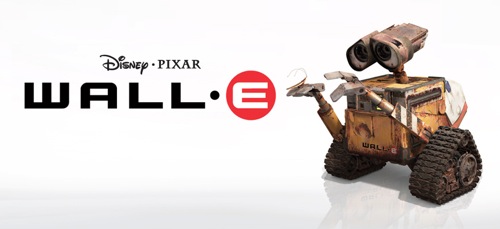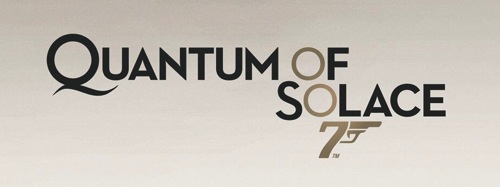After 12 Years a Slave to arthritis, Philomena, once an accomplished ballroom dancer, succumbed to the Gravity of Her situation and stopped dancing. Today, though, she was feeling the itch to dance again as she journeyed from Nebraska to the Dallas Buyers Club of New and Used Dance Shoes to meet some old friends.
Acquainted with the aged former star, the pilot of the flight she was on exclaimed as she boarded, “Why if it isn’t The Wolf of Wall Street on my flight today.” (She earned her nickname because the dance studio she belonged to was in the financial district and competitors said the unassuming woman who dominated the competitions was like a wolf in sheep’s clothing.) She replied, “Oh, Captain Phillips! So nice to see you again.”
After the flight, he asked for a dance. As they spun around while dancing the American Hustle, she started leading him. Noting his surprise, she whispered in his ear, “I’m the captain now.”
Once again this year, I did my Oscars homework and watched each of the films nominated for Best Picture prior to the Oscars telecast. And like last year, I posted a review on Letterboxd after viewing each film.
Here are my reviews of the nine nominated films ranked by my level of enjoyment of them.
9. 12 Years a Slave: ![]()
A well-made, difficult-to-watch look into this dark and disgusting chapter of American history. Well made, but not something I ultimately enjoyed. The cast—particularly Chiwetel Ejiofor, Michael Fassbender, and Lupita Nyong’o—was superb.
One point in particular, though, left me wanting. After being subjected to horror after horror, I wanted something more substantial in an ending. While Solomon’s actual story may have been this anti-climactic, I felt the resolution seemed too enabled by a deus ex machina in Brad Pitt’s character.
Other aspects, while not leaving me wanting, left me puzzled. For example, the woefully miscast Brad Pitt. I understand he was a producer on this film, but what was he doing in the film. The scene with Alfre Woodard seemed like it didn’t belong in the film. Was it the content of the scene? Was it the scene stylistically didn’t seem to fit? Several places during the film, the camera held on something or someone for just too long. Is this just Steve McQueen’s style? Was this to make a point of something? Was it to make the audience uncomfortable? And there’s Hans Zimmer’s score. I didn’t think the score was effective, and I am dumbfounded regarding the praise it has received. The score is barely there and barely musical, and the parts that are approachable are a(nother) rehash of his score for The Thin Red Line.
Ultimately, the film was a mixed success for me. As a film exploring this repulsive time in American history, the film succeeds. As an acting vehicle for Ejiofor, Fassbender, and Nyong’o, the film succeeds. But as a cinematic story and experience, too many elements kept me from fully embracing the film.
8. The Wolf of Wall Street: ![]()
As mentioned before, I have difficulty enjoying films that in any way sensationalize or trivialize the debauchery and douchebaggery of Wall Street. This film was no exception. Add to that the plodding nature of this film—and the ridiculous runtime—and you get a film I did not enjoy.
7. Dallas Buyers Club: ![]()
Another Best Picture nominee where performances in the film outshine the film itself. This film is all about Matthew McConaughey’s performance with a bonus in Jared Leto’s. Both are surely deserving of the accolades that have come and will be coming their way.
6. American Hustle: ![]()
A stellar, electric cast in a stylish-and-frenetic-but-sometimes-dragging caper.
5. Nebraska: ![]()
The message I took from this bleak-yet-funny film: get to know your loved ones while you still can.
4. Captain Phillips: ![]()
Knowing the outcome of this story arrested some of the suspense, but not knowing or forgetting many of the details boosted the suspense. And the end. Well done everybody.
3. Philomena: ![]()
Heartwarming and bittersweet. Dame Judi was a treat. (I’ll avoid any commentary on the Catholic Church because I have nothing nice to say.)
2. Gravity: ![]()
Wow.
Beautiful yet frightful. Expansive yet sparse. Vast yet claustrophobic. And all around, a visual masterpiece.
And might it be a sonic masterpiece as well? Both the sound effects (no sound in space until POV shots where we hear what the characters would hear in their suits) and the score were superbly rendered. Before I heard Steven Price’s excellent score, he was unknown to me, but now I look forward to hearing more from him.
Both the film and the score will be present on my end-of-the-year favorites list.
1. Her: ![]()
What defines love? Who determines who or what is capable of love? Or capable of being loved? These questions and more are posed by Spike Jonze’s terrific film. Both introspective and extrospective, the film is firmly rooted in all things melancholy—never does it become sappy, but never does it become depressing. But that melancholy is contrasted (complemented?) by the warmth of the production design (it’s almost like the these contrasting feelings are a play on Louis CK’s “Everything’s amazing and nobody’s happy”). And, much to its credit, never does the film overtly take a stance on our technological fate: the film doesn’t make technology the savior nor the destructor.
What the film does, though, is examine relationships of all kinds—coworkers, friends, strangers, lovers—and posit we all are looking to connect to someone—or something—else. How do we find that connection? How do we keep that connection? Where do we go if we lose that connection?
These are the questions I found myself asking after seeing the film. But I suppose the biggest question I came away with was where do I download the Samantha voice for my iPhone?
Unlike the last two years, my favorite film of the year—Her—is amongst these nine nominees, but I still want to point out one of my favorites which you should all see:
The Way, Way Back: ![]()
My first 2013 film I can describe as thoroughly charming. And let me throw in heartwarming and comical. Sam Rockwell was a definite standout of this film. But Allison Janney was my highlight. The first several minutes of her performance exemplify why I love watching her.
And while I did love watching her and watching Her, it will be a film I did not love watching that will win Best Picture today: 12 Years a Slave. While I did not enjoy it, I can’t argue it is both worthy and well-made.

